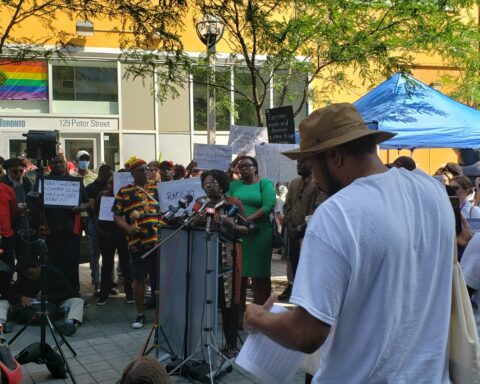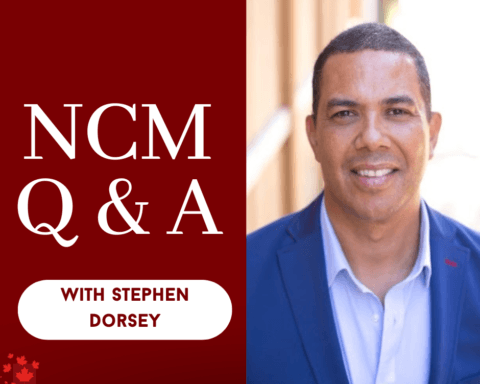Immigration and the ‘immigrant experience’ are often used as a smokescreen to mask systemic racism and exclusion.
This is according to Neethan Shan, executive director of the Council of Agencies Serving South Asians (CASSA), who led a roundtable discussion titled “Equity and Inclusion Across Multiple Terrains” at the 18th National Metropolis Conference on Mar. 4, along with a handful of researchers and service providers.
“Through our work we find that so much of the struggle that immigrants go through is related to race and racism and that inequity and exclusion are tied to race,” Shan said in his opening remarks.
Shan pointed out that systemic racism exists both at the policy level, highlighting the controversial Bill C-24 as an example, and on the ground in many aspects of settlement such as education, recreation and employment.
Racism in employment
When it comes to employment, the expectations of Canadian experience, language proficiency and an understanding of ‘soft skills’, have undertones of racism and exclusion, explained Shan.
“Part of my experience coming to Canada was figuring out what Canadians meant when they said stuff like, ‘Keep your stick on the ice,’ – that is a soft skill,” shared Ikem Opara, who participated in the roundtable and works as a strategy lead at the Ontario Trillium Foundation. “It can be exclusionary when you don’t know that that means something other than take a stick and put it on the ice.”
Admitting he agrees with the idea of “soft skills”, though, Opara said the problem with them lies in understanding why some are prioritized over others.
“I don’t think there is any cultural community in the world that does not like resiliency, the issue is what it looks like when it is performed in a cultural community that is not yours.”
One of the panellists, Nadia Jamil, of the Peel Newcomer Strategy Group, explained her organization is conducting a study to unpack the concept of soft skills and why they are a leading factor to newcomers not being able to retain employment.
When it comes to employment, the expectations of Canadian experience, language proficiency and an understanding of ‘soft skills’, have undertones of racism and exclusion…
“If we’re going to continue to see there to be a ‘norm’ in Canada without kind of wondering where that norm came from, there’s going to be a lot of ‘othering’ taking place, which we see a lot of in the workplace,” said Jamil.
Shan explained that sometimes even in the settlement sector this can be reinforced, when career counsellors will remove something from a person’s resume without considering what that experience meant to them, or when they emphasize the importance of a handshake or eye contact without contextualizing it.
“I think [soft skills] is a terminology that’s made up pretty much for exclusion,” stated Umashanie Reddy, executive director at Calgary Bridge Foundation for Youth “I don’t practise it in my organization and I don’t ask for it.”
Assimilation, not integration
Reddy, who was raised in South Africa, said there is definitely covert racism in Canada.
“I grew up in an apartheid regime country and I know exactly when someone’s being racist,” she said. “It’s so under the trenches that you can’t see it. It’s very rife in workplaces.”
Reddy said the challenge for many immigrants is that when they finally land employment, they do not want to jeopardize it by speaking out about racism on the job so their “hands are tied.”
“When we accept people from other countries, then we have to accept the entire package – not half the package,” said Reddy. Otherwise, she added, “we’re no longer talking about integration, we’re talking about assimilation … I don’t think that’s the route we want to go.”
Malissa Bryan, a PhD student in sociology at the University of Guelph, said the current ‘norm’ is Euro-centric, which is problematic as it doesn’t value the rich histories of Canada’s indigenous people or other ethno-cultural communities.
“There’s not enough cultural exchange happening, so when different people come to Canada it should be acceptance on both ends where there’s a joint and new culture formed that’s considered a Canadian culture,” Bryan explained. “There’s a lot of tolerance, but not necessarily inclusion.”
“There’s not enough cultural exchange happening, so when different people come to Canada it should be acceptance on both ends where there’s a joint and new culture formed that’s considered a Canadian culture.”
Fighting for change
Shan, and his organization CASSA, have been working on a campaign to raise public awareness in Ontario so that residents will accept and acknowledge that racial inequity – structural, institutional and individualized – exists.
The campaign, Racism Free Ontario, played a role in the province appointing a Minister Responsible for Anti-Racism, Michael Coteau, last month.
Coteau will oversee an Anti-Racism Directorate, which will specifically examine the four ministries of justice, health, education and employment, where systemic racism is most evident, Shan explained.
But, Shan cautioned, just because there’s now a government body established, it doesn’t mean the work is over. For people like him, fighting racism is a lifelong commitment.
Having arrived in Canada at age 16 as a refugee from Sri Lanka, Shan said he has had to work four times harder than his affluent, Caucasian counterpart, to get where he is today.
“It feels like I’m ready to retire now because of the impact of fighting those barriers.”





